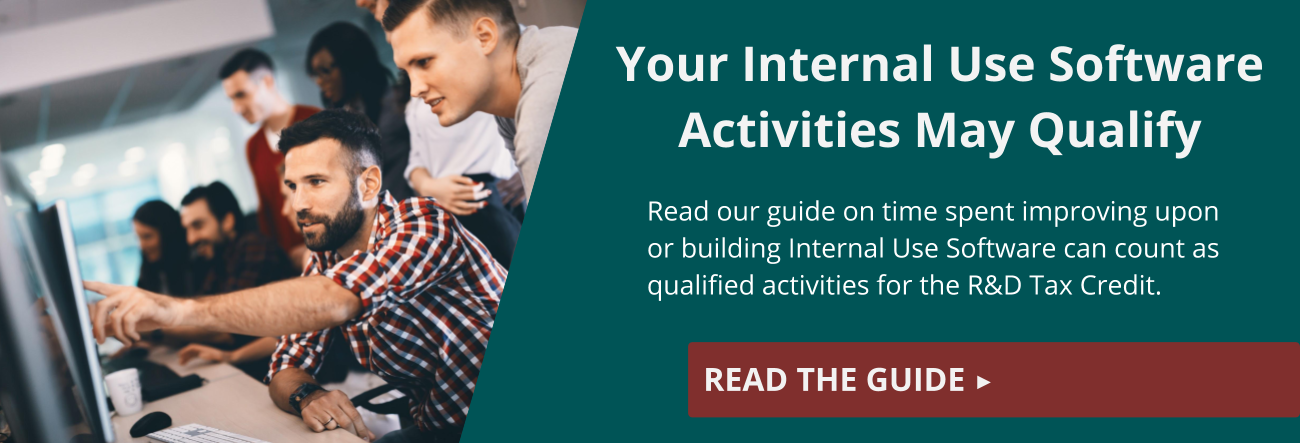
Although it was passed by the U.S. Department of the Treasury in 2016, many businesses still either don’t know about or don’t understand the implications of Treasury Decision 9786. It is intended to help clarify the many issues relating to internal-use software (IUS) and research activities that qualify for the R&D Tax Credit.
Prior to Treasury Decision 9786, the language was confusing and vague, leaving much gray area in deciding what would or would not be considered IUS. Among the most noteworthy issues was the exclusion of software developed for the delivery of a service—such as providing an application for customers to look up financial information at a bank or brokerage firm, purchase a product on-line, check the status of an order, or accept customer payments. Now, the IRS considers software enabling a company to interact with third parties or that allows third parties to initiate functions or review data on that organization’s system to be IUS, providing another avenue for businesses to earn the R&D Tax Credit.
Not just for commercial software vendors
You don’t have to be a commercial software vendor to earn a tax credit for developing IUS. Your organization simply needs to create or improve software systems that are in support of your business to potentially be eligible. Here are the qualifying functions:
- Financial management functions of the taxpayer and the supporting recordkeeping.
- Human resource management functions that manage the taxpayer’s workforce.
- Service functions that support the day-to-day operations of the taxpayer.
The 3-Part High Threshold of Innovation Test
Once you’ve identified an area that can be considered as IUS, you need to not only pass the Four-Part Test but the 3-Part High Threshold of Innovation Test, too. The Four-Part Test helps companies determine if their research and development activities qualify for tax credits. The four parts include elimination of uncertainty, process of experimentation, technological in nature, and qualified purpose (more on that below). The 3-Part High Threshold of Innovation Test regulations are:
- The software results in cost reduction, improved speed or other measurable improvement that is substantial and economically significant.
- The software development process involves significant economic risk. This means that the taxpayer commits substantial resources to the development and there is uncertainty due to technical risk that the resources would not be recovered within a reasonable period of time.
- The software is not available to be purchased, leased, or licensed in the commercial market and used for the intended purpose without modifications.
These regulations are designed to encourage companies in all industries to continue to invest in “innovative software” that allows them to compete more effectively on a global basis.
The Four-Part Test
Once you’ve identified potential qualifying activities, run it through the Four-Part Test to verify. The four parts of the test are:
- Permitted Purpose. This is the activity intended to make or improve either a product or process that results in improved function, performance, reliability, quality or cost efficiency.
- Technical Uncertainty. This is the activity intended to eliminate technical uncertainty when developing or improving a product or process related to methodology, design, techniques, formulas or inventions.
- Process of Experimentation. This is the activity that includes a process of experimentation to eliminate or resolve technical uncertainty. During the process, various alternatives and approaches are evaluated by modeling, simulation, trial and error, prototyping and other methods.
- Technological in Nature. The process of experimentation must rely on the hard sciences (engineering, physics, biology, chemistry, computer science).
Understanding how IUS applies to the R&D Tax Credit can mean more money for your business. If you’re not sure where to start, or still have questions, we’re here to help.





